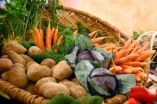The Scientist's Life Science Salary Survey 2010 -- results announced
The Scientist, F1000's magazine of the life sciences, announced today the results of the 2010 Salary Survey of life scientist professionals
2010-11-03
(Press-News.org) This year's Salary Survey saw drops in salaries across the board with almost every speciality suffering a setback, some with dips as large as $20,000 (ecology) and $28,000 (virology).
However, a few select fields, namely bioinformatics, biophysics, biotechnology, and neuroscience, bucked the trend and actually posted salary increases this year. Whilst it is not easy to determine why these specialities saw salaries rise and others saw salaries cut, Mark Musen, head of the Stanford Center for Biomedical Informatics Research at Stanford University commented: "I've noticed this year that start-up packages for new faculty members in biomedical informatics have been enormously generous because the competition is so intense." And as Barry Connors of Brown University in Providence explains: "The field of neuroscience has enjoyed a steady increase in popularity over the past two decades, and this trend is continuing."
Many institutions have had to bear the brunt of the current financial crisis head on. Even tenured scientists near the end of their careers, those with contracted salaries, are feeling the effects. "There's an incentive to keep a salary coming in," says James Bassingthwaighte, a tenured bioengineer at the University of Washington in Seattle, "especially when my retired friends express concerns that their income shrivels with the market downturns."
Feedback shows that it is not only the cost of living in harsh economic times that has risen, but the cost of actually doing science has increased as well. As Mary Dickinson of Baylor College of Medicine commented: "Now instead of one to two grants to run a modest-size lab, people need three of four to keep pace."
Almost all professional levels in the life sciences are feeling the strain of the current financial situation, but there is one demographic group that always feels it – postdoctoral fellows. Currently, postdocs receiving federal awards make between $37,740 to $52,068 a year, depending on a fellow's level of experience. In some cities highlighted on this year's cost-of-living map graphic, this may be sufficient to cope with the cost of living, but many still feel the pinch. It's no surprise then, that postdocs have developed creative coping mechanisms for scraping by on a penny.
INFORMATION:
Full results, further statistics and interactive charts can be found at www.the-scientist.com/salarysurvey and in the November print issue. The Scientist, voted B2B "Magazine of the Year" two years in a row by the American Society of Business Publishers, is available in print and online at www.the-scientist.com.
About The Scientist
The Scientist, F1000's magazine of the life sciences, has informed and entertained life science professionals around the world for over 24 years. We provide print and online coverage of the latest developments in the life sciences including trends in research, new technology, news, business and careers. We reach the leaders in academia and industry that are interested in maintaining a broad view of the life sciences by reading insightful articles that are current, concise, accurate and entertaining. For more information about The Scientist, visit www.the-scientist.com.
ELSE PRESS RELEASES FROM THIS DATE:
2010-11-03
WEST LAFAYETTE, Ind. - Researchers have learned the structure that results when an antibody binds to the West Nile virus, neutralizing the virus by locking up its infection mechanism. The information could help scientists develop a vaccine against the mosquito-borne disease.
The findings show precisely how a key part of the antibody, called the antigen binding fragment, or Fab, attaches to two adjacent protein molecules that make up the virus's outer shell. This "crosslinking" attachment between molecules is repeated over the entire shell, interlocking the 30 molecular ...
2010-11-03
Winston-Salem, N.C. – Researchers for the first time have shown that drinking beet juice can increase blood flow to the brain in older adults – a finding that could hold great potential for combating the progression of dementia.
The research findings are available online in Nitric Oxide: Biology and Chemistry, the peer-reviewed journal of the Nitric Oxide Society and will be available in print soon. (Read the abstract.)
"There have been several very high-profile studies showing that drinking beet juice can lower blood pressure, but we wanted to show that drinking beet ...
2010-11-03
TORONTO, Ont., Nov. 2, 2010-Severely injured patients should be transported directly from the scene of an accident to a trauma center, even if it means bypassing a closer hospital, according to new research that shows this results in a nearly 25 per cent lower death rate.
However, even though 80 to 85 per cent of people in North America live within a one-hour drive or flight of a trauma center, 30 to 60 per cent of severely injured patients are still taken to the nearest hospital.
Researchers led by Dr. Avery Nathens, trauma director at St. Michael's Hospital in Toronto, ...
2010-11-03
A study by the team headed by Lluís Ribas de Pouplana, ICREA professor at the Institute for Research in Biomedicine (IRB Barcelona), has been chosen as "Paper of the week" in the December issue of the Journal of Biological Chemistry, which is already available online. The article describes the discovery of a new protein in the fly Drosophila melanogaster (fruit fly) that is crucial for mitochondria. The removal of SLIMP in these flies leads to aberrant mitochondria and loss of metabolic capacity, thus causing death.
The study, whose first author is Tanit Guitart, a PhD ...
2010-11-03
A University of Toronto study shows that visual attention -- the brain's ability to selectively filter unattended or unwanted information from reaching awareness -- diminishes with age, leaving older adults less capable of filtering out distracting or irrelevant information.
Further, this age-related "leaky" attentional filter fundamentally impacts the way visual information is encoded into memory. Older adults with impaired visual attention have better memory for "irrelevant" information. The research, conducted by members of U of T's Department of Psychology, will ...
2010-11-03
Canadians who work night and rotating shifts are almost twice as likely to be injured on the job than those working regular day shifts, according to a study by researchers at the University of British Columbia.
The study, published in the current issue of the Scandinavian Journal of Work, Environment and Health, examined data on more than 30,000 Canadians collected as part of Statistics Canada's Survey of Labour and Income Dynamics and compared results between workers involved in different types of shift work from 1996-2006. It shows that while the overall rate of work ...
2010-11-03
Every person emits the equivalent of approximately two tonnes of carbon dioxide a year from the time food is produced to when the human body excretes it, representing more than 20% of total yearly emissions. That is what a study by the Universidad de Almería says, confirming for the first time that human excrements contribute to water pollution, primarily with nitrogen and phosphorus.
A team of researchers from the Universidad de Almería (UAL) has estimated the environmental impact of the Spanish diet and role that human excrements play in the life cycle of food. It is ...
2010-11-03
A new report from the Energy Biosciences Institute (EBI) in Berkeley projects that development of cost-competitive algae biofuel production will require much more long-term research, development and demonstration. In the meantime, several non-fuel applications of algae could serve to advance the nascent industry.
"Even with relatively favorable and forward-looking process assumptions (from cultivation to harvesting to processing), algae oil production with microalgae cultures will be expensive and, at least in the near-to-mid-term, will require additional income streams ...
2010-11-03
Amsterdam, 2 November, 2010 - An investigation conducted in the context of the Swiss National Research Programme (NRP50), Endocrine Disrupters: Relevance to Humans, Animals and Ecosystems, demonstrates for the first time that internal exposure of humans to cosmetic UV filters is widespread.
In the course of the Summer and Fall 2004, 2005 and 2006 (3 cohorts), human milk was sampled by mothers who had given birth at the University Women's Hospital in Basel. The participants filled out a detailed questionnaire with general questions and, as special feature, in depth questions ...
2010-11-03
Over the past decade, the undersea robots known as autonomous underwater vehicles (AUVs) have become increasingly important in oceanographic research. Today's AUVs fall into two groups: 1) propeller-driven vehicles that can travel fast and carry lots of instruments, but are limited to expeditions of only a few days; and 2) "gliders," which can stay at sea for weeks or even months at a time, but cannot travel very quickly. MBARI engineers recently demonstrated a new super-efficient AUV that combines the best of these two approaches. This new long-range AUV (LRAUV) can travel ...
LAST 30 PRESS RELEASES:
[Press-News.org] The Scientist's Life Science Salary Survey 2010 -- results announced
The Scientist, F1000's magazine of the life sciences, announced today the results of the 2010 Salary Survey of life scientist professionals



